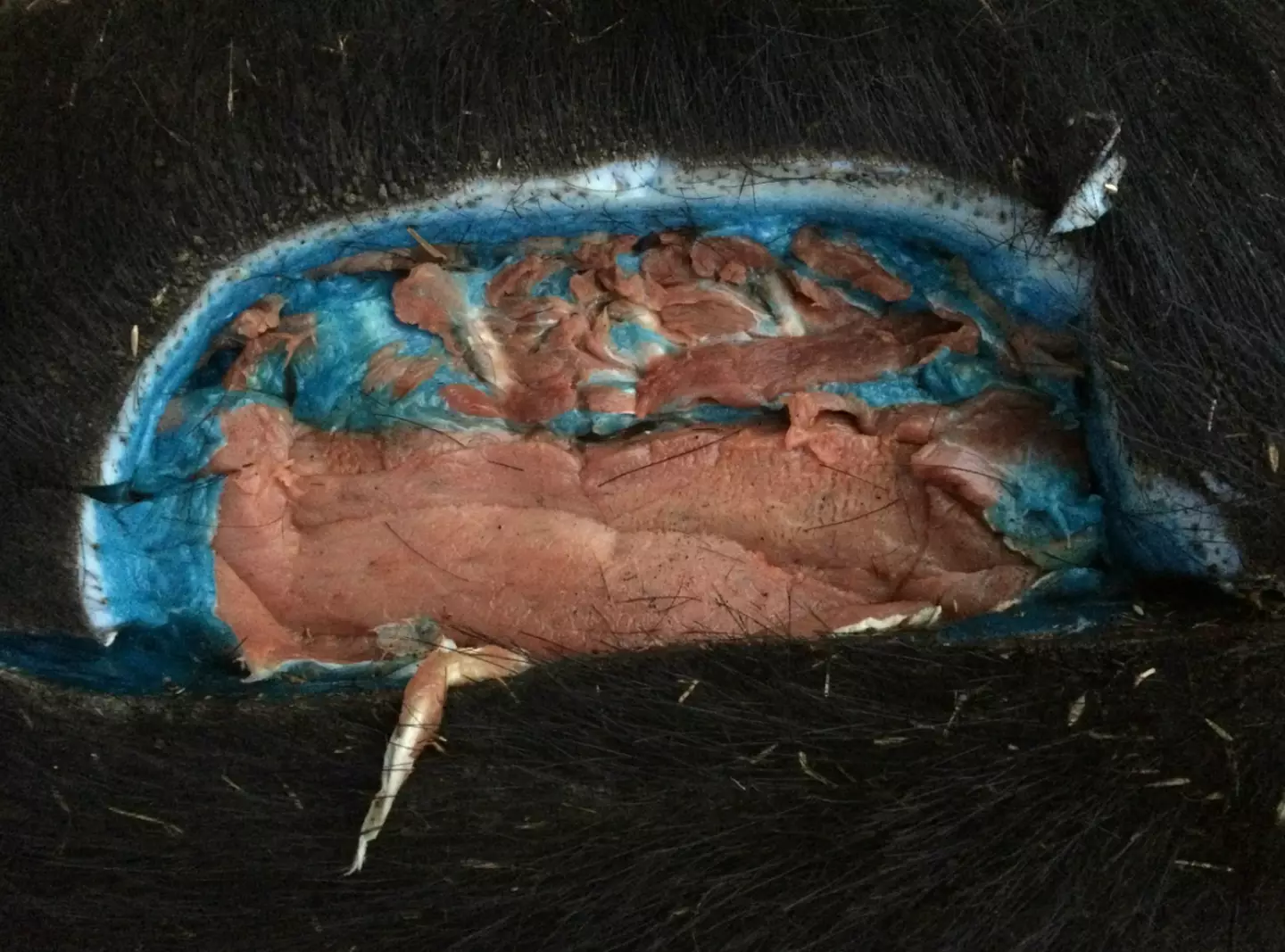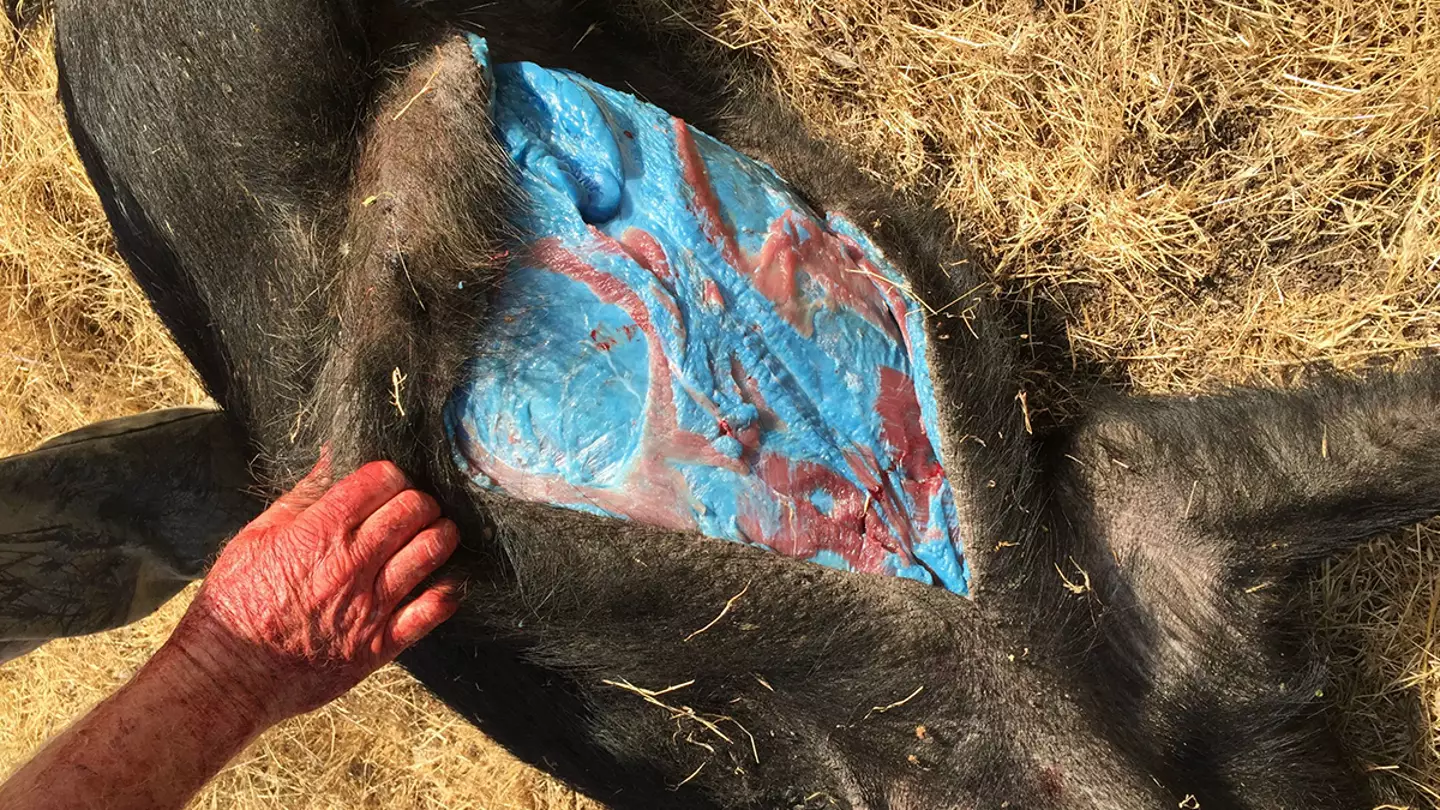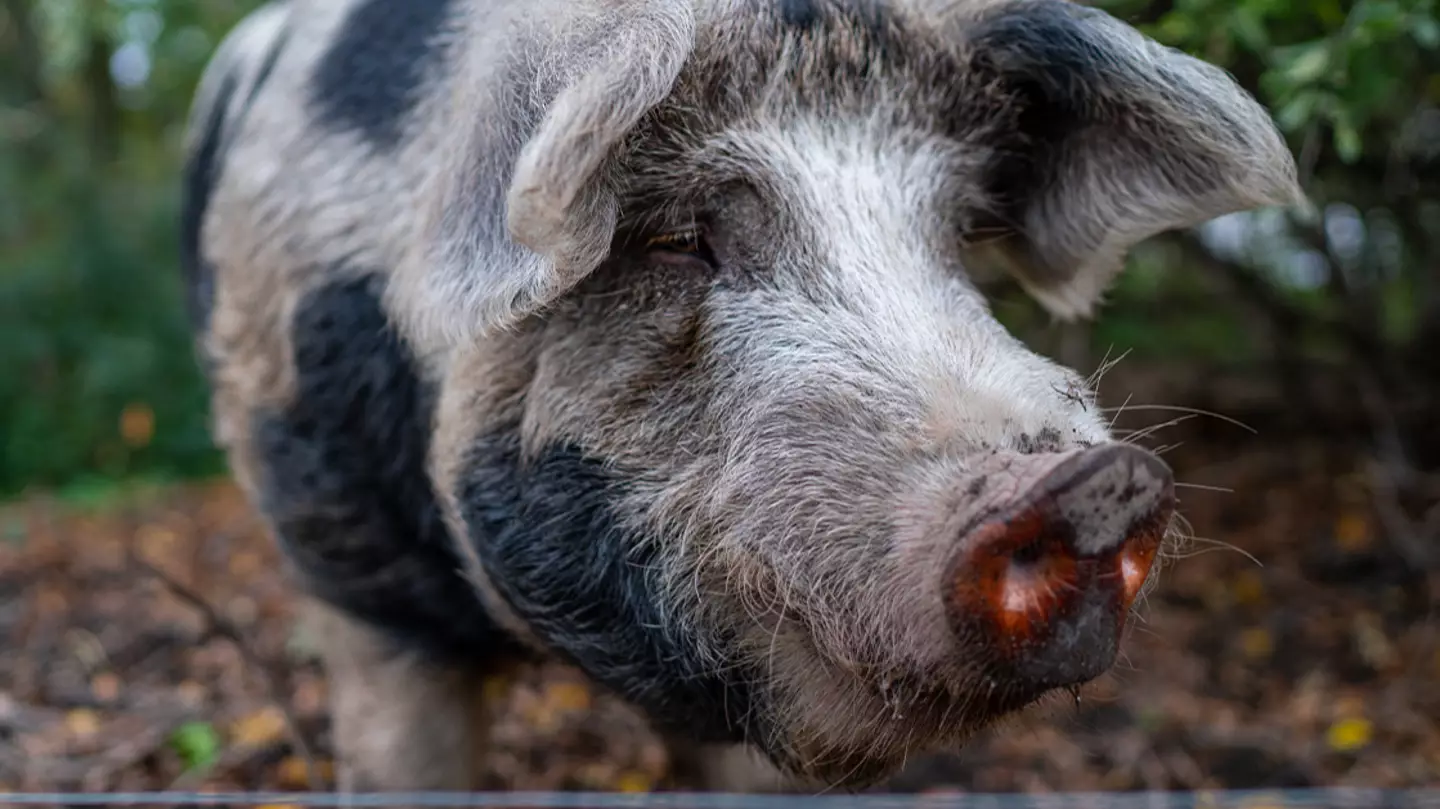Some individuals prefer their steak rare, but the term has taken a literal twist due to the discovery of wild pigs with blue-hued flesh.
Dan Burton, who operates a wildlife control business, is accustomed to capturing wild pigs for his clients. However, he was baffled earlier this year when he encountered a pig with blue-colored flesh.
“I’m not talking about a little blue, I’m talking about neon blue, blueberry blue,” Burton shared with the Los Angeles Times.
He alerted officials in Monterey County, California, and the California Department of Fish and Wildlife about this unusual occurrence.
Residents in Morgan Hill have reportedly encountered similar blue-fleshed pigs in the past. In 2015, someone shared images of a deceased wild pig on the image-sharing platform Imgur.
“So, my in-laws live on a ranch in Morgan Hill, CA and they shot a wild pig on it. They thought it a normal pig until they cut it open,” they posted on Imgur.
Similar to Burton’s account, the pig displayed neon blue flesh.

The California Department of Fish and Wildlife’s (CDFW) Wildlife Health Lab (WHL) and the California Animal Health and Food Safety Laboratory in Davis suggest that these pigs might have ingested pesticide bait containing the anticoagulant rodenticide diphacinone.
Rodenticide is a widely used chemical by farmers and businesses to control populations of rodents like rats, mice, and squirrels.
Blue tissue in wild pigs could indicate the ingestion of rodenticide bait, which is dyed blue to make the poison easily identifiable.

Consuming one of these blue pigs is strongly discouraged due to the risk of ‘secondary exposure’ to the poison, as traces of the substance can linger in the organs and tissues of the affected animal, according to the Los Angeles Times.
Cooking the meat does not reduce the poison’s concentration, so it remains unsafe even when cooked.

In a recent news release, CDFW Pesticide Investigations Coordinator Dr. Ryan Bourbour stated: “Hunters should be aware that the meat of game animals, such as wild pig, deer, bear and geese, might be contaminated if that game animal has been exposed to rodenticides.”
“Rodenticide exposure can be a concern for non-target wildlife in areas where applications occur in close proximity to wildlife habitat.”
If anyone encounters an animal with blue tissue, they are encouraged to report it to the CDFW’s Wildlife Health Lab at [email protected] or by calling (916) 358-2790.

